Hurricanes, also known as cyclones or typhoons in other parts of the world, is overwhelming, especially when you have diabetes; with diabetes, you have added challenges to consider during natural disasters. Hurricanes consist of heavy rains, swirling winds, storm surges, floodwaters and possible loss of power. It is crucial for you to have your diabetes supplies, medications, adequate food and plenty of water or sugar-free beverages, during this devastating event. Your most important priority is be ready by using “advanced planning” and to have your “go to bag” always available. Store it in a place you will easily remember. Waiting until the last-minute for supplies and groceries, is a disaster, when you enter to empty shelves and long lines. Discover how easy it is being well-prepared for when you face a major hurricane this season, even when you have diabetes.
Prior to a Hurricane
Advanced planning is the only way to get ready; you won’t have to think about it as it is happening; no plan creates even more anxiety. A stressful situation like a hurricane can easily make your blood sugars go up, from a surge of the hormone called cortisol. Keep life calmer and blood sugars more stable by being ready. Prior to any hurricane, consider taking a free CPR/first aid course offered thru the Red Cross. Think about signing up for Community Emergency Response Team (CERT) courses on hurricane preparedness; every community offers them, usually free of charge or for a nominal fee. This can make you feel more in control before anything ever even happens.
Shelter Evacuation: Should I, or Shouldn’t I?
Every hurricane will present different scenarios and unique situations. If you are in an evacuation zone and required to leave, then it is best to follow the recommendation. You may live near an ocean, on low ground or be in a flood zone which can create havoc with flood waters, during a hurricane. Instead of taking risks, especially with diabetes, have a plan to evacuate in place. To find a shelter near you, text FEMA along with the word “shelter” and your zip code to 4-3-3-6-2. Red Cross shelters accept everyone and helps those with special needs feel welcome. Make sure someone knows where you are going.
- When evacuating- remember to unplug all home appliances. Turn off water, gas and electric.
- Secure all windows, shutters and doors prior to leaving. Put away pool/patio furniture into the garage and look for any other projectile objects which may go flying during strong winds, including potted plants.
- Fill the car gas tank before entering the shelter.
- Have your backpack- (waterproof and insulated) ready to go with supplies, listed below. Do not wait until the storm to prepare!
- When staying in an emergency shelter, let others know you have diabetes. Wear an ID emergency necklace or bracelet that contains your important medical information and states-DIABETES. Inform shelter leaders if you have other health issues, such as heart disease, reduced vision or chronic kidney disease. Let staff know if you are on kidney dialysis.
- Keep a written copy of your emergency contacts and phone numbers, including your doctors- internist/endocrinologist and pharmacy with you always. Include a list of all your medications with doses and reasons for each medication. Have a print copy of all your prescriptions- in case your pharmacy is out of commission or if their software system goes down after the hurricane.
- Make sure to list an emergency contact from outside of the area as well as in the immediate area.
- Have written medical information in case you require assistance with your care. Describe your condition, treatment plan and how you take your medication. If you are on insulin, write down the regimen-short /long acting and when. If you are on an insulin pump, write down the settings.
- Store emergency numbers under “ICE” in your cell phone, which stands for “in case of emergency,” as emergency response teams are trained to look for this important information.
- Carry a copy of your birth certificate, driver’s license, passport, health insurance cards/Medicare card, proof of address and ATM/credit cards. Always store them in a plastic Ziplock bag or thick plastic container and make sure to protect these items. Bring extra cash, in case banks are closed after the storm.
- Bring a portable charger with batteries, so your cell phone is always charged. The best piece of equipment is a universal battery-operated charger, in case you use a continuous glucose monitor (CGM). It can work for all your electronic needs.
- Charge all electronics while the electricity is still available and keep them on low power mode. Do not use unneeded APPS. Do not play games on your phone which can waste power.
- Bring essentials – simple bedding, baby wipes, mouth care supplies, personal grooming kit, foam earplugs, hand sanitizer, rubber gloves and face mask, flashlight, small hand-held battery- operated fan, battery operated radio and a multi- purpose tool with a manual can opener.
- Have a basic first aid kit with Band-Aids, antibiotic salve, ace bandage, daily vitamins, cortisone OTC cream, aspirin, Tylenol or NSAIDS, sugar free cough/ sore throat drops and heart burn/upset stomach medication. Keep a sugar source-such as glucose tabs or gel, in case blood sugars drop.
- Shelters usually supply the food/fluid basics. You should be prepared with granola bars/meal replacement bars, trail mix, nuts and seeds, whole grain crackers, peanut/almond butter, juice boxes, shelf stable milk, beef or turkey jerky and extra water with diabetes.
- During times of stress, when blood sugars climb, you need extra calorie- free fluids to beat dehydration.
- Listed below will be the specifics for your diabetes kit, including storage of insulin and other supplies. Do keep all your diabetes supplies in a separate waterproof bag.
Or Remaining at Home?
If you are lucky enough being in a safer area outside a dangerous flooding zone (although there are no guarantees when a hurricane hits) you will still need ample preparation and supplies. Many of the above listed supplies you should have ready to go at home, as well.
- Make sure to have your same supply backpack, “go to bag” ready.
- Secure all windows and doors and stay far away from the windows and glass sliding doors. During the most intense part of the storm, stay in a room without a window such as the bathroom, interior room or a walk-in closet.
- Drink plenty of water. Make sure you have safe drinking water available by keeping extra bottled water on-hand. You should have a gallon per day per person and a 5-7 days minimum supply of water, available. Remember stress, high blood sugar, heat, water pills for blood pressure control and certain diabetes medications may cause you to lose fluid faster.
- Try to eat as “normal” as possible. The selections will be limited but do your best to include some form of protein-canned fish, canned chicken or peanut butter and whole grain crackers or canned low sugar fruit cups for carbohydrates.
- Have regular hard candy, soft jelly beans or glucose tablets or gels with you at all times in case your blood sugar plummets. Hypoglycemia happens when you are skipping meals; never skip meals even if food intake doesn’t resemble your regular food supply.
- Watch out for your feet during hurricane emergencies. When indoors, keep your feet warm and dry in closed slippers. If the air-conditioning goes off during or after the storm, and you are hot, always keep feet covered, at least in closed sandals. Do not walk outside in contaminated flood water and always wear shoes with closed toes. Rubber boots would be the best choice to walk outside, after the hurricane. Continue to examine your feet for signs of injury or infection. If you get injured, seek medical treatment, immediately.
- Plan for emergencies. Prepare an emergency kit with at least two weeks’ worth of diabetes supplies and medications, including insulin and insulin syringes. Store prescription medications that may need to be kept cool such as insulin in a FRIO wallet or small cooler; Frio products only need water to start the cooling mechanism to keep insulin at a proper temperature. Update the medications and supplies in your emergency “go to bag” regularly; check the bag contents at least every two months to make sure the supplies have not expired. Rotate older supplies to the front. The bag should contain all the above first aid supplies.
Children with Diabetes
- If your child has diabetes and goes to day care or school, inquire about the facility’s emergency plan. Make sure they have the necessary supplies for your child during a hurricane. Include a five -day supply of medications, diabetes supplies, water and foods your child can eat. Identify the staff members that may assist your child during an evacuation and verify they know what to do for your child, during an emergency. Have your child wear an emergency necklace or bracelet to let people know he/ she has diabetes. Teach your child the symptoms of hypoglycemia and hyperglycemia. Make sure they carry glucose tablets.
- Have a general preparedness kit for your family to use at home as you would, if you evacuate. You need protein and high – quality complex carbohydrates in portion size to keep blood sugars stable; foods should be rich in nutrients. Have disposable cups, plates and napkins in your pantry as well as a propane tank for a camp stove. A small portable coal grill will work well, too. Keep low-sugar and low-sodium foods in your kit that require little or no preparation and do not require refrigeration or cooking. Include high protein items such as canned tuna, chicken, sardines or salmon, nuts, beans as well as unsweetened canned fruits, unsweetened apple sauce and no-salt vegetables. Have jarred nut butters in the pantry. If you have dry mixes, verify they can be mixed with water rather than dairy products that spoil. Check the freshness dates regularly and replace expired items. Keep in mind you may need extra bottled water for washing up and brushing your teeth, if the water supply goes down or becomes contaminated; some people fill the bathtub halfway for an extra source of water for washing. Keep small, portable battery-operated fans to help you stay cool. Have flashlights or lanterns for a light source.
- Purchase several types of apples, bananas and oranges for fresh fruit that can stay without refrigeration for at least 4 days.
- Do not eat perishable foods from the refrigerator after 4 hours, if the power goes out. Foods stay safe approximately 24-48 hours in the freezer. Keep the doors closed as much as possible. Watch out and avoid eating any spoiled food which can cause food borne illnesses. Sudden nausea, vomiting or diarrhea and abdominal pain could happen, if you are not careful.
Type 1 Hurricane Emergency Preparedness Kit
Individuals with type 1 diabetes cannot live without insulin or diabetic keto-acidosis (DKA) will occur; it is critical that you are always ready with your insulin as well as all your supplies. Listed below are specific things you should have in your diabetes kit. Keep them in a waterproof/ insulated bag. The bag should be kept in a cool, dry and safe place. Put your name, phone number and medical conditions listed in the bag.
- Insulin – either in vials or pens – long and short acting – whichever current regimen you use – enough for 2 weeks. Insulin needs to be stored as directed. A Frio (pouches that cool when submerged in water) or cold pack to keep the insulin cool when unopened. Do not use dry ice which may freeze insulin; never use frozen insulin. Insulin does not expire until the date on the box, when unopened. Insulin should be kept at 36-46 degrees Fahrenheit – when possible. Once opened most insulin should be used within 28-30 days. Some newer insulins can last open to 40 days. Insulin should be stored under 80 degrees Fahrenheit, once opened. When the insulin’s temperature exceeds 86 degrees Fahrenheit, it usually loses its potency; you should continue to take it if that is your only source of insulin, during an emergency.
- If you use an insulin pump – extra reservoirs and infusion sets, adhesive and adhesive remover. If the pump fails – extra insulin in a pen with needles or a vial with syringes should be ready.
- CGM – If you use a CGM, you need to be prepared with extra supplies/sensors.
- Keep a record of your insulin regimen written and stored with the extra supplies. List basal rates, insulin to carbohydrate ratios and insulin sensitivity factor (calculation of how much one unit of insulin lowers your blood glucose levels).
- Syringes and /or extra pen needles.
- Ketone strips.
- Glucose tablets or gel for lows. Small juice boxes.
- Glucagon shot for extreme lows. Make sure someone knows how to inject it.
- Small sharp’s container.
- Hand sanitizer/alcohol wipes.
- Meter kit – (an extra meter would be worthwhile). Extra batteries for the meter. Lancets, lancet device and testing strips. Testing solution – for strip accuracy. Strips not opened, expire on the date written on side of the box. Opened strips expire according to the manufacturer’s instructions. Most strips are good for 3 months, once opened. Check for your specific brand.
- All other prescription medications.
Type 2 Hurricane Emergency Preparedness Kit
All the supplies listed above except for the insulin, syringes, pens or needles, unless you are currently taking insulin. Individuals with type 2 diabetes rarely require ketone strips or a glucagon shot for low blood sugars but check with your physician prior to a storm.
After the Hurricane
- Watch out for ants, mosquitoes and other insects which are plentiful with flooding. Keep bug-spray with DEET available. Bug bites can easily become infected when blood sugars are elevated.
- Check your home for leaks and broken windows. Mold is a common problem which causes respiratory issues after a hurricane.
- Throw out all spoiled foods and beverages. Wipe down the inside of the refrigerator with bleach wipes.
- Be careful when cleaning up outside. Wear eye protection, face masks and garden gloves when removing debris. Wear socks and boots on your feet.
- Keep cuts and scrapes covered and protected.
- Do not overexert yourself. The temperature can be hot with high humidity – a sure combination for dehydration.
- Think about RX OPEN – This service is free and helps you locate a pharmacy near you that remains open when yours may be closed due to the hurricane. It is provided by Healthcare Ready.
- Check your home insurance plan for any damage. Even some health insurance plans have a, “disaster override” to replace destroyed insulin- check with your own policy.
- Reach out on social media by using a Diabetes Online Community on Twitter or Facebook. You may get some relevant and much needed information and advice. The community is strong and willing to help in all kinds of emergency situations. Do not use random sites for medical information.
- Red Cross hotline – 988-500-8645.
- Know which Urgent Care centers and hospitals are operating near you.
- Find out if your health care provides telemedicine visits if you can’t get to a physician.
Being well-prepared can save your life during a crisis such as a hurricane. Put together a complete emergency medical kit and life – preparedness kit, store them where you can find them, right away. Minimize your stress and blood sugars by being prepared for any crisis. Try to keep life as normal as possible; have board games, arts and crafts supplies, puzzles and playing cards ready for some fun. Do not be too hard on yourself; during stressful times, your blood sugars may be far from perfect. Remember, when the hurricane is over, you can go back to your normal standard plan of care and controlled blood sugars. Be ready!




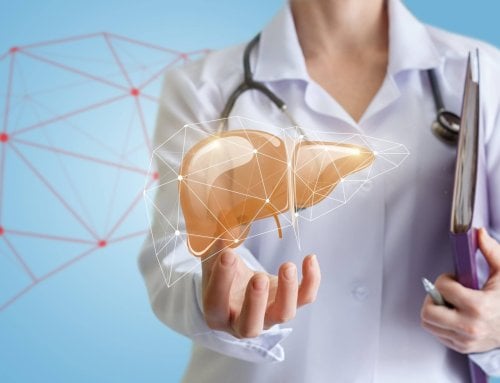

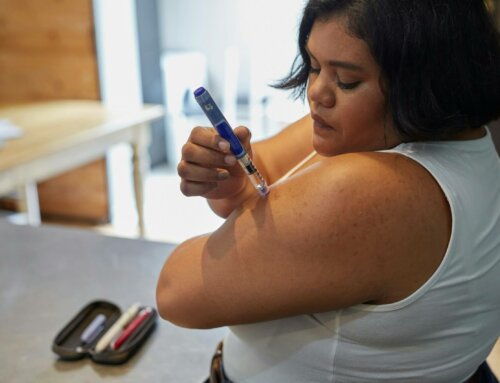
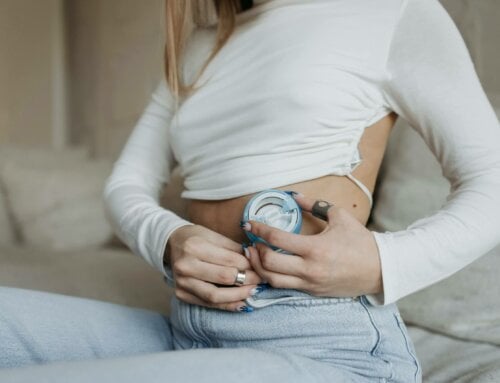
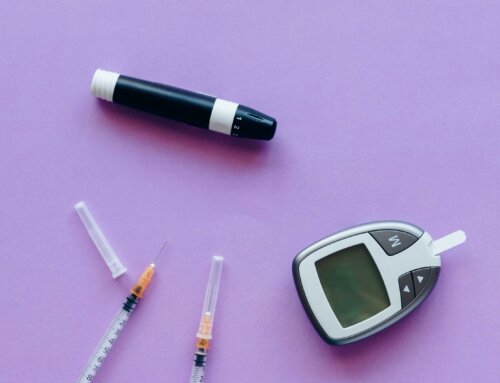
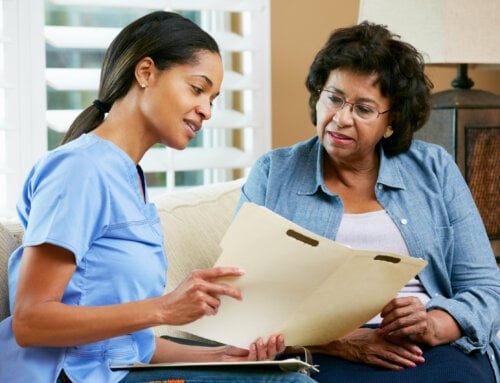


Leave A Comment